
Ready to improve your ID skills without needing to rely on your phone? We suggest focusing on just one birdsong per week. You'll be well on your way to confidently identifying the top garden visitors on this page in just over three months!
Get to grips with the songs of some of the most common birds you’re likely to hear in your garden or local area.
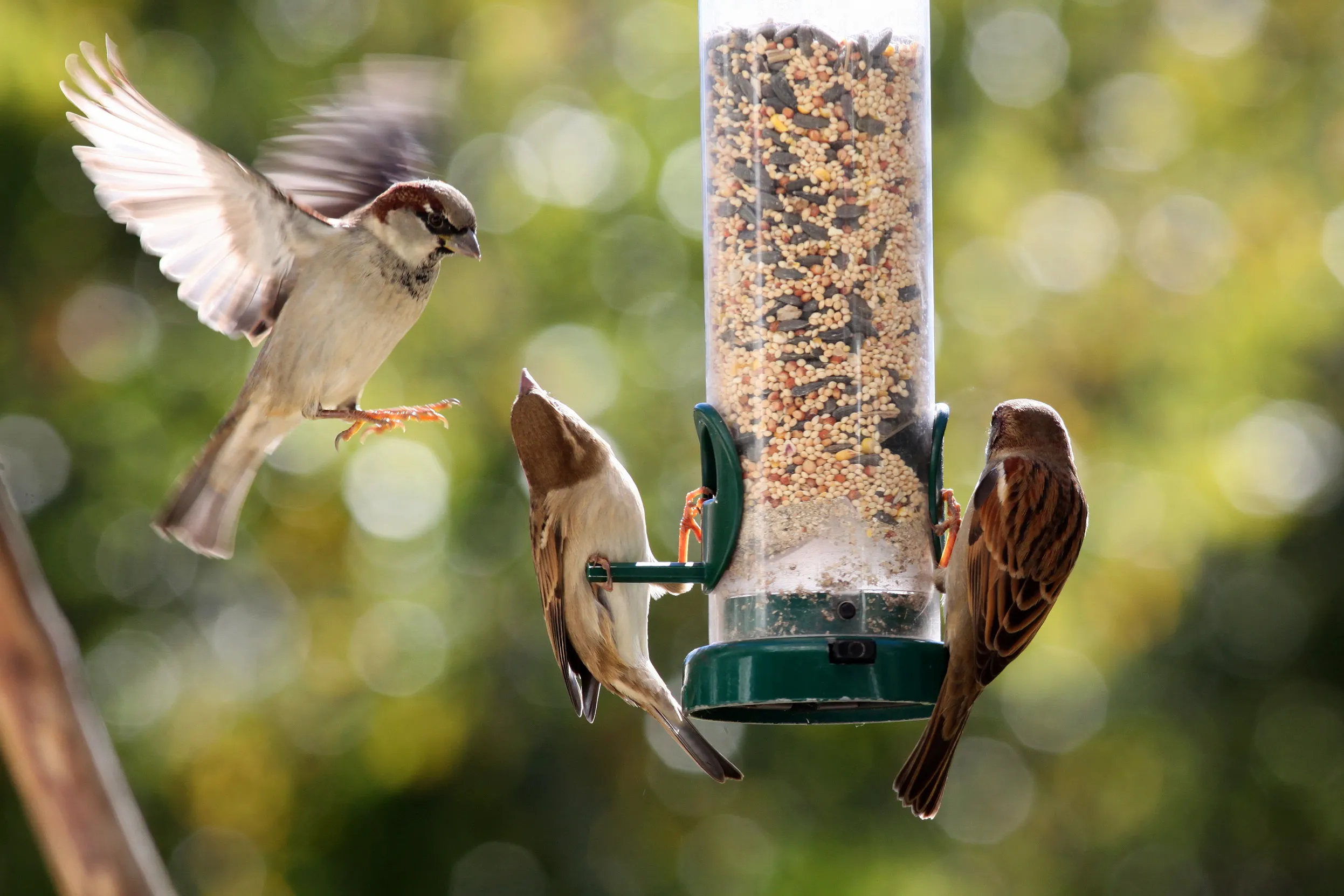
Heard a sweet serenade but you’re not sure which species was singing it? Use the tips in the RSPB’s Birdsong Identifier to help you to recognise some of nature’s greatest songsters.
Learning songs can be tricky, but we’re sharing a few anecdotes to improve your musical memory. You’ll also get a breakdown of some context – the ‘whats’, the ‘whens’ and the ‘wheres’ – which will help to further your avian investigations.

Ready to improve your ID skills without needing to rely on your phone? We suggest focusing on just one birdsong per week. You'll be well on your way to confidently identifying the top garden visitors on this page in just over three months!
A melodic, high-pitched whistle. Each verse is different, but most follow a similar structure: short (two to four second), gushing phrases – punctuated with abrupt pauses.
All year round, apart from a quieter period when they’re moulting after breeding, during July – August. They’re even notorious nighttime vocalists, with the invention of streetlights increasing the regularity of their after-dark performances.
Robins like to sing from a perch, whether that be a fence post, a tree branch or the handle of your garden spade. They can be seen almost anywhere around the UK, in gardens, parks and cities.
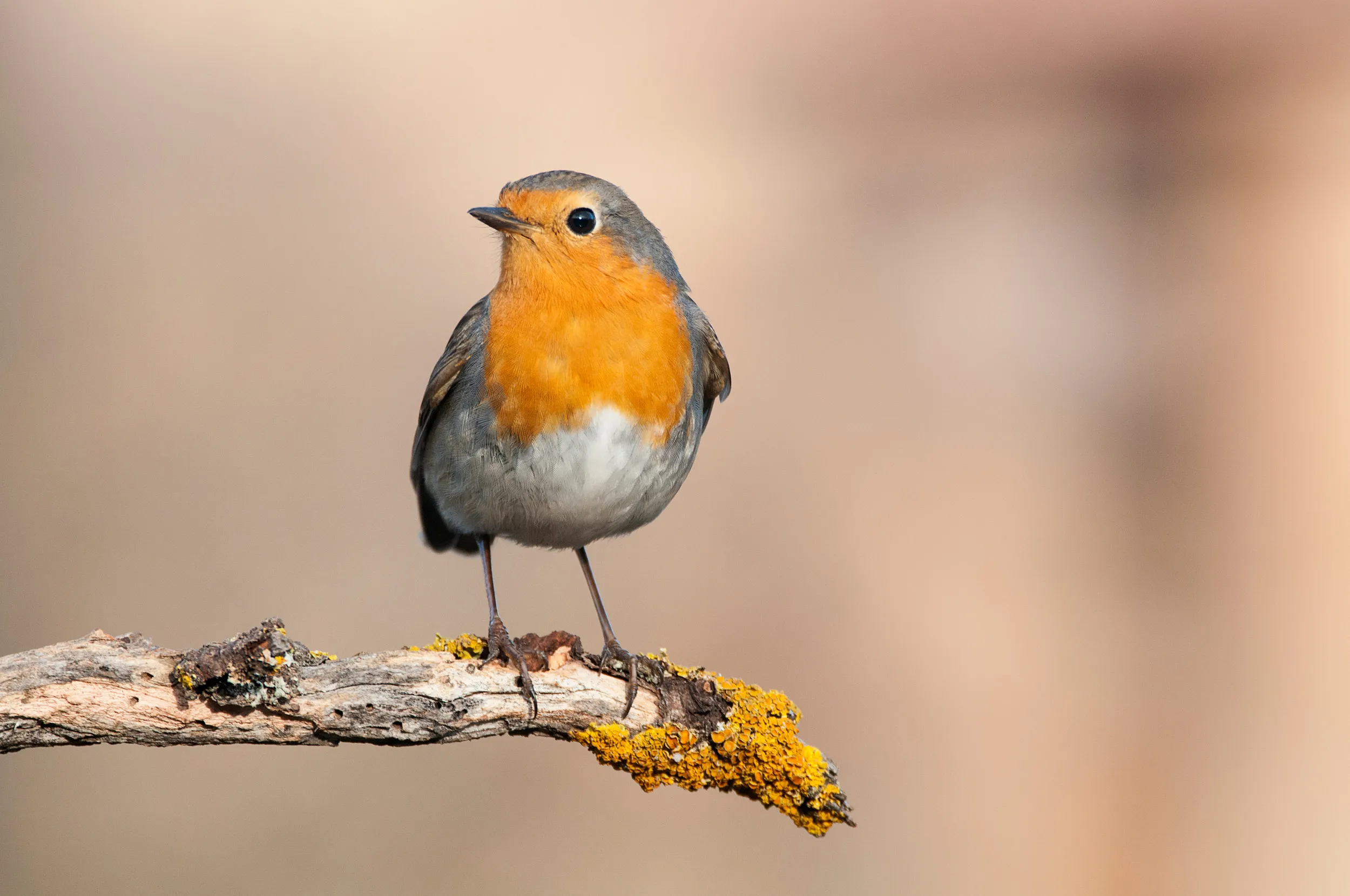

The UK's favourite bird. Thanks to its bright red breast, it's familiar throughout the year and especially at Christmas.
A deeper, fluty whistle. Blackbirds sing a series of short phrases, but at a more relaxed, mellow pace than the Robin. He often finishes each verse with a little squeaky twiddle.
The song can be heard all year round, but most regularly during the breeding season between March and June. They’re a leading voice in the UK’s dawn chorus, no matter where you are, but they often kick off the dusk orchestra too. Listen out for a Blackbird’s melody on a warm, summer evening.
Blackbirds like to perch at height, giving them a bird’s eye view of their surrounds. Scan the skyline to find these songsters – you’ll often find them on a tree’s top branches or on a roof.


Male Blackbirds are black with a bright orange-yellow beak and yellow eye-ring.
An explosive song – it’s fast paced and loud. Over the course of five seconds, the song packs in 100 notes in a series of trills (birds can make two notes at the same time), before ending with a machine-gun style rattle. Listen out for of an arcade game-like ‘POW POW POW!’
Another all year round, dawn-til dusk-vocalist – but best heard in the breeding season between March and May.
You’ll often hear a Wren before you see one. They keep a low profile, flitting through thick undergrowth at the bottom of our bushes and hedges. They’re one of the UK’s most common breeding birds, and you can hear them almost anywhere.
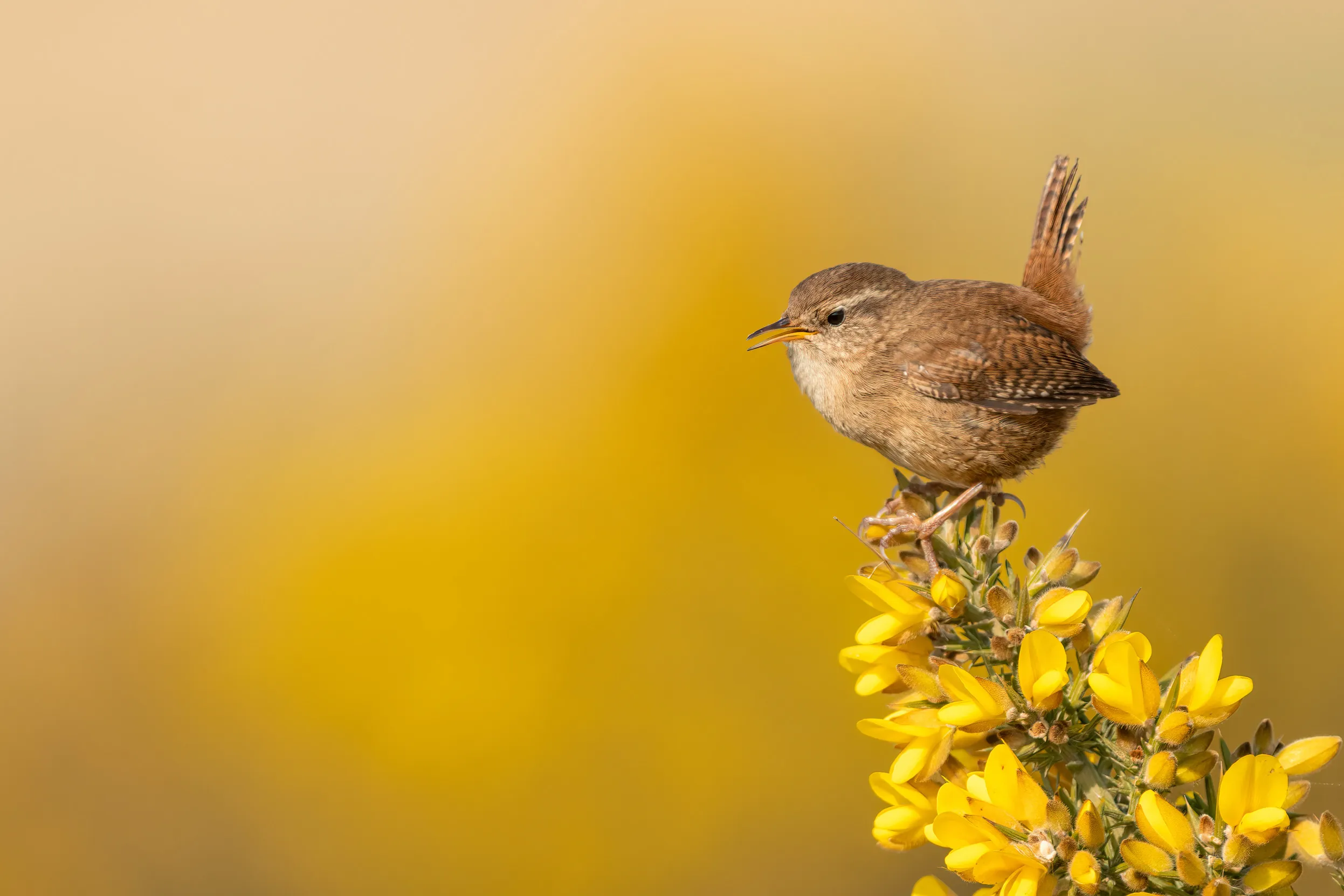
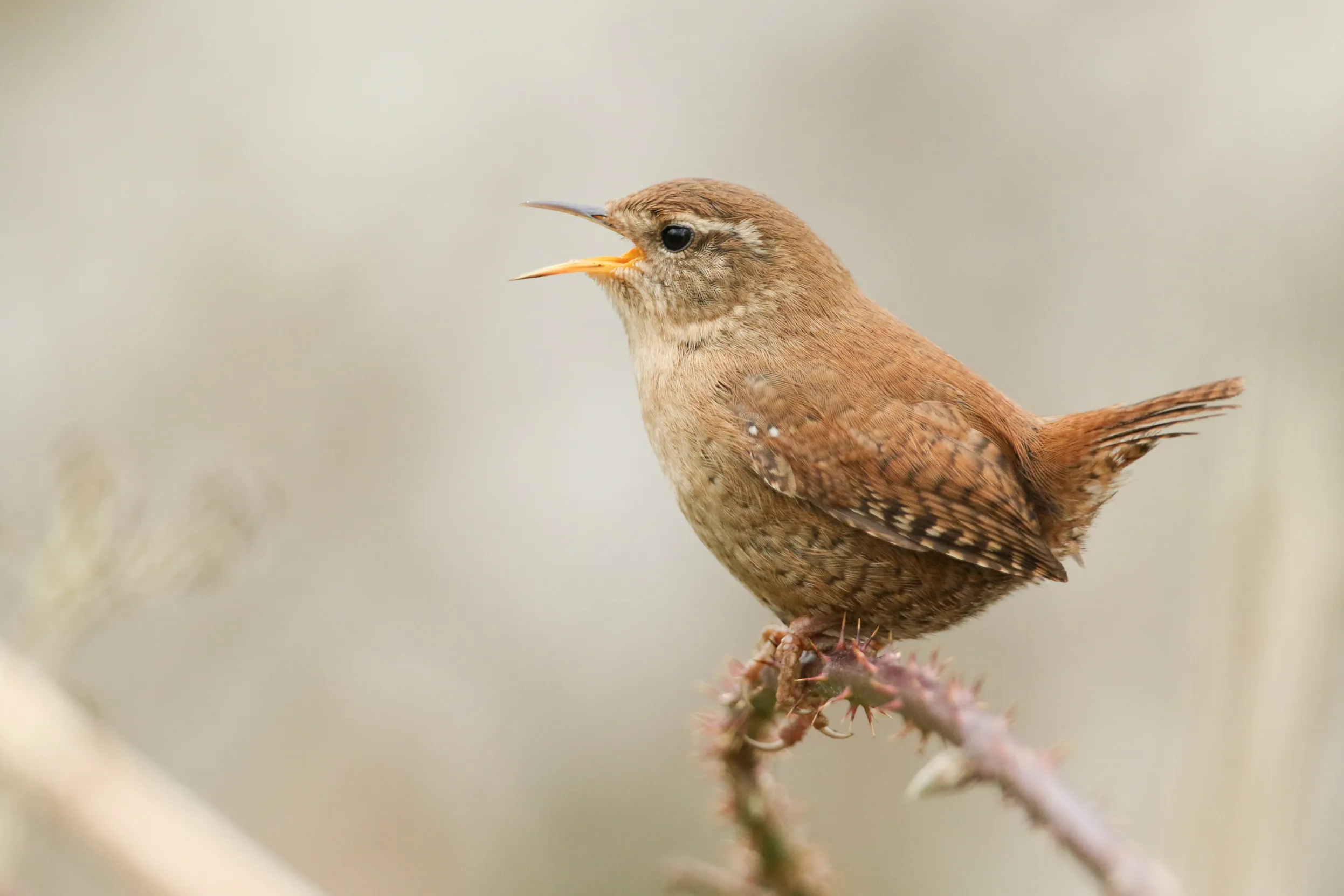
The Wren is a tiny brown bird, although it's heavier and not as slim as the even smaller Goldcrest.
A trademark two-syllable song, which sounds like they’re shouting out for the ‘teacher’. They have over 40 songs and sounds, all with a metallic, ringing quality. They’re often described as ‘seasawing’ between notes (or sometimes – a little less romantically – they’re compared to a squeaky bike pump!).
They’re vocal all year round, but you’re more likely to hear its most distinctive little ditty in the spring and summer.
Great Tits are typically woodland birds, foraging in trees and bushes to find insects, and nesting in holes in trunks. But keep an ear out in your local garden or green space – they have adapted well to living alongside humans, often feasting at feeders.
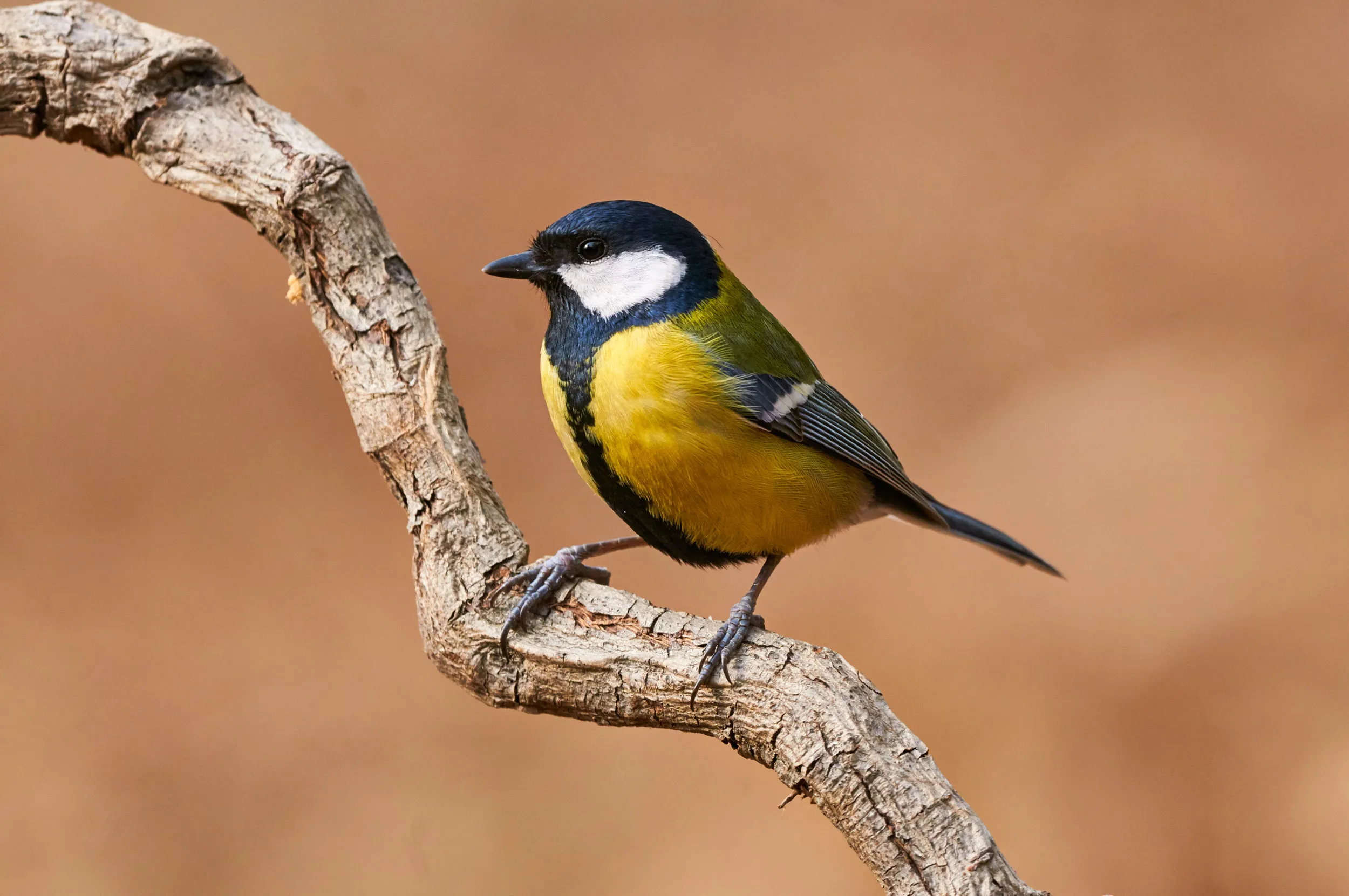

This is the largest UK tit with a distinctive two-syllable song.
A short, trill phrase that often gets repeated in close succession. Usually a couple of high pitched ‘tseep’ sounds, followed by a lower pitched, closing rattle.
Blue Tits belt out all year round. In spring and summer, they’ll use their voice to defend territories and attract a mate. Throughout winter, they’ll hang out in feeding flocks of multiple species, where they keep in touch through contact calls.
While they’re a little shier than their larger relatives, they’re still a regular feature at the bird feeder, especially through winter. They can be heard all across the UK – apart from on some of the Scottish islands where, like Great Tits, they’re a bit of a ‘twitch’ when blown across by storms.


A colourful mix of blue, yellow, white and green makes the Blue Tit one of our most attractive and most recognisable garden visitors.
A series of cheeps and chirrups that can go on for several minutes. Only the males sing the full song, however it’s not uncommon to hear an entire group of House Sparrows making quite the raucous at your feeders or in hedges. They’re sociable birds and their contact calls are a similar ‘cheeping’ sound.
All year round – but you’re most likely to hear them singing in spring.
House Sparrows have adapted well to living alongside humans and are regular visitors to gardens, along with being a regular sight in towns and cities. They’ve taken the number one spot on Big Garden Birdwatch for 21 years, but their populations are still facing severe declines.

.jpg)
These noisy and sociable birds are found around the world, thanks to their cheerful ability to make the most of humanity's rubbish and wastefulness.
Just about everything! These birds are impressive mimics – from car alarms to dog barks, their incredible syrinxes (a bird’s version of a larynx) allow them to distract and confuse predators. Heard an unusual bird, like a Lapwing or a Curlew, in completely the wrong habitat? You might find your culprit comes in a Starling-shaped package.
Almost always! Morning, noon, and night and all year round. Through the winter, the UK sees an influx of Starlings come across from Europe, so their chameleon vocals become even more common.
And just about everywhere! They’re a frequent fixture in our towns and cities but can be found in more rural environments too. Visit a reedbed at dusk in the winter months, and you might catch them performing their mesmerising murmurations – they can gather in huge numbers, and their wingbeats sound like crashing waves.

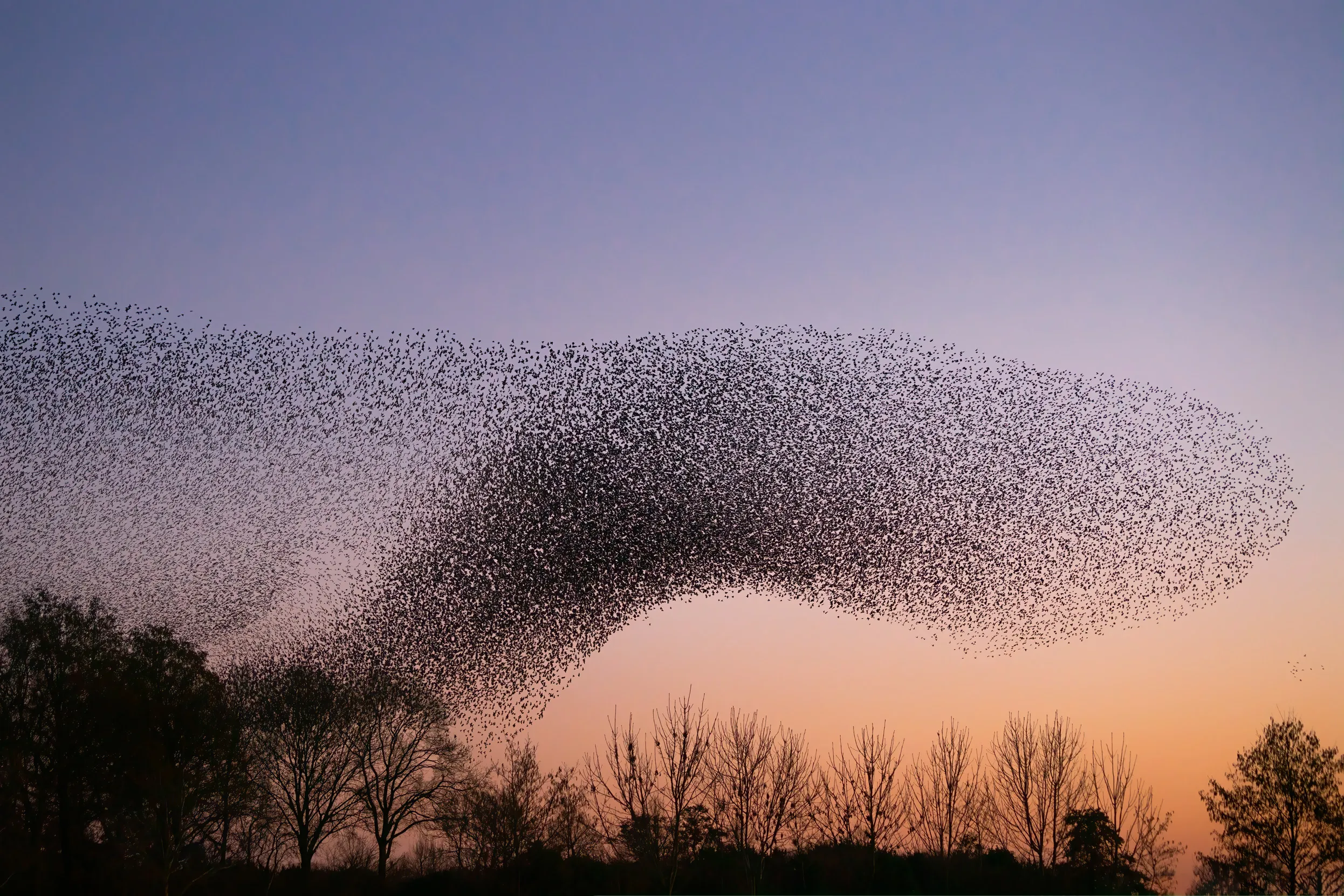
Smaller than Blackbirds, Starlings have a short tail, pointed head and triangular wings.
Mellow coos, with a husky, raspy tone. A similar sound to a Collared Dove, but the Woodpigeon’s song features five notes, rather than three.
Always, and they breed all year round, too, although nesting is more common in the warmer months. They can be seen in large flocks the winter – there’s still some mystery surrounding how far they migrate.
They’re our most common species of the five UK pigeons and doves. Their cooing if often heard from high up in trees, so look out for them in parks, cemeteries, the countryside and your garden.
Telling the different between the song of a Collared Dove and Woodpigeon can be made easy with a memorable mnemonic. Some think that a Collared Dove sounds like it's like its singing in support of its favourite team: ‘Man United, Man United...’
But here’s our favourite way to remember it!

A Collared Dove simply sounds like it’s saying its own name: Coll-ared Dove
While a Woodpigeon repeats the latter half of the word: Woodpigeon, pigeon

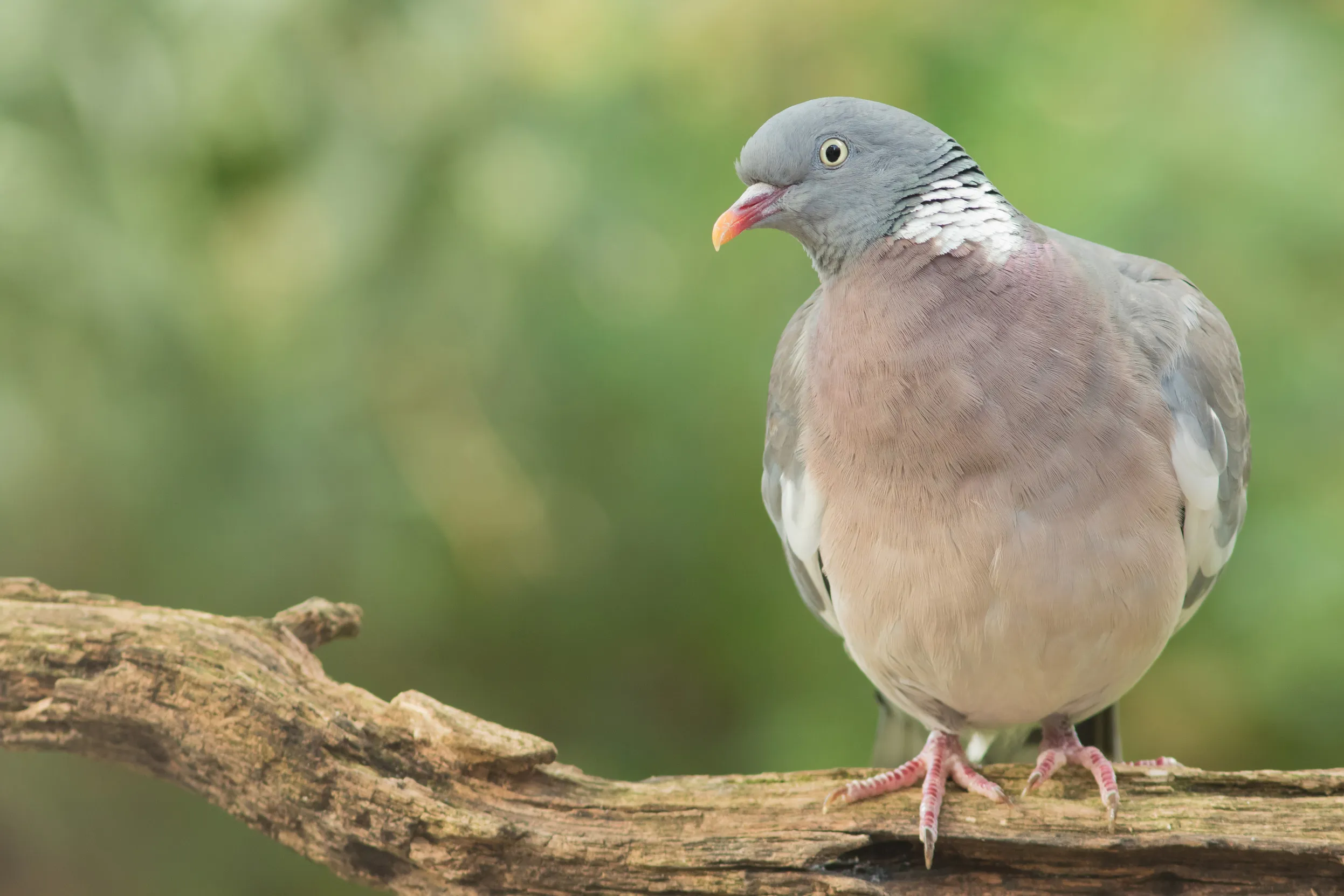
The UK's largest and most common pigeon, the Woodpigeon is largely grey with a white neck patch and white wing patches, clearly visible in flight.
Long verses of a twinkling, fast-paced tune. They’re often heard before they’re seen when flying together in flocks (known as a ‘charm’ of Goldfinches). Here, they make a similar contact call, composed from notes in their song, which makes their presence obvious when they’re overhead.
Throughout the year.
Their beaks are perfectly adapted to their seed diet. They can be found eating teasles or thistles out in the countryside. But they’re a regular garden visitor too, especially where nyjer or sunflower seeds can be found.


The Goldfinch is a colourful finch with a bright red face and yellow wing patch.
A set of around ten notes, descending down the scale and finishing with a flourish. It’s a similar structure to the cascading song of the Willow Warbler but the tone is easily separates the two. It’s harsh around the edges – think glass marbles bouncing off one another.
Listen for the full song in spring and summer, but their contact call can be heard throughout the year.
They’re a common sight in parks and gardens throughout the year. In the winter, they can be heard travelling in large flocks.
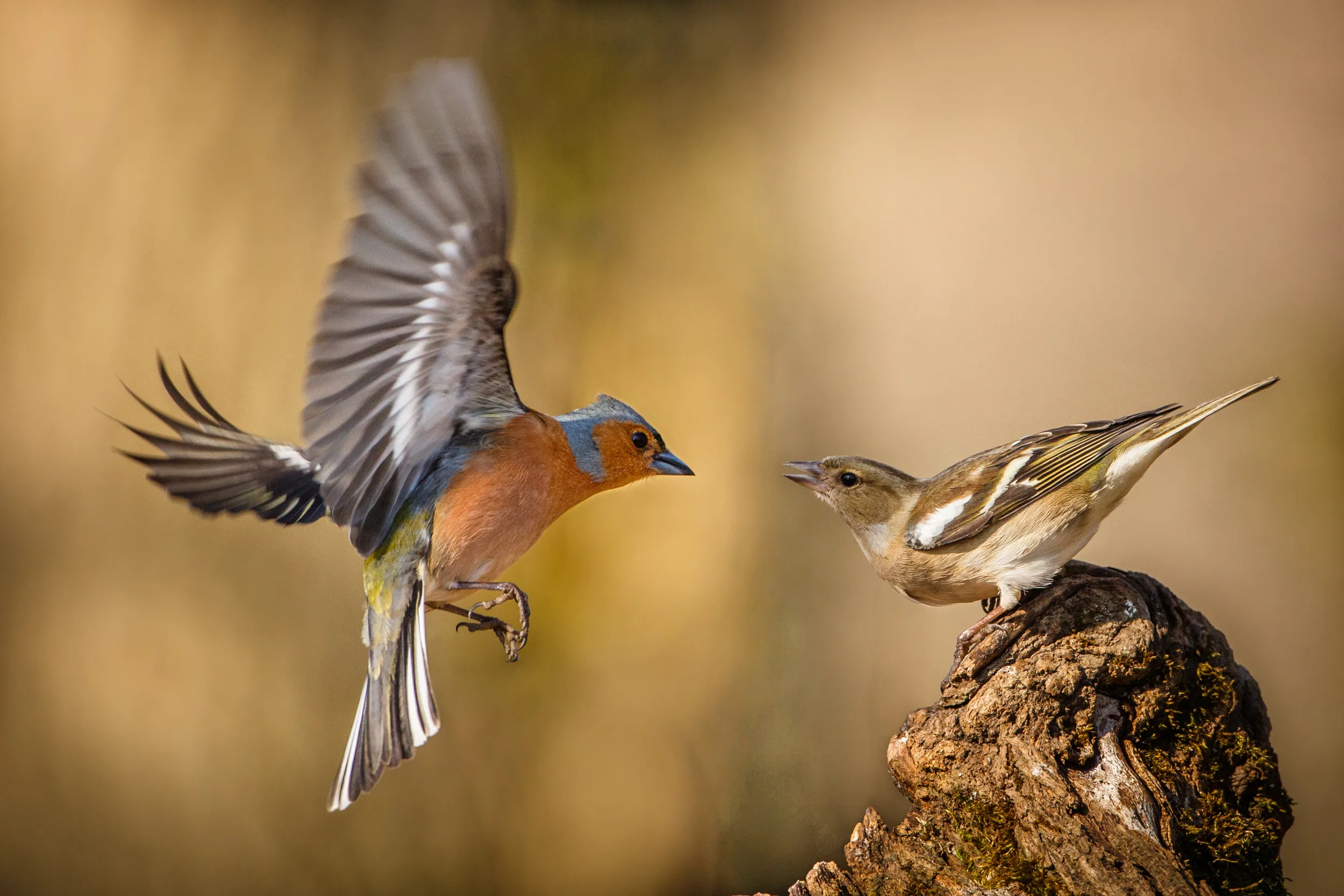

The Chaffinch is one of the most widespread and common birds in Britain and Ireland.
A varied song, but with a very distinct pattern. A Song Thrush will repeat a short phrase three or four times, before taking a short pause and moving on. The phrases are adhoc, but they’re all loud and explosive.
They’re an early riser in the Dawn Chorus – waking the world up with its freestyle scatting. They can be heard all year round, but our populations are boosted in winter months by birds from Europe.
These thrushes are typically a woodland bird but can be heard in parks and gardens.


A familiar and popular garden songbird whose numbers have declined significantly on farmland and in towns and cities.
An onomatopoeic call – these warblers shout their name proudly through a series of staccato ‘chiffs’ and ‘chaffs’.
You’re most likely to hear this song in the spring months, when huge numbers of Chiffchaffs arrive on our shores to breed. Listen out in March when their distinctive sound is an early sign of spring.
Chiffchaffs tend to be found in woodland. However, they’ll take advantage of trees in parks and gardens, in areas where they can feast on plenty of insects.

The Chiffchaff is a small olive-brown warbler which flits through trees and shrubs, with a distinctive tail-wagging movement.
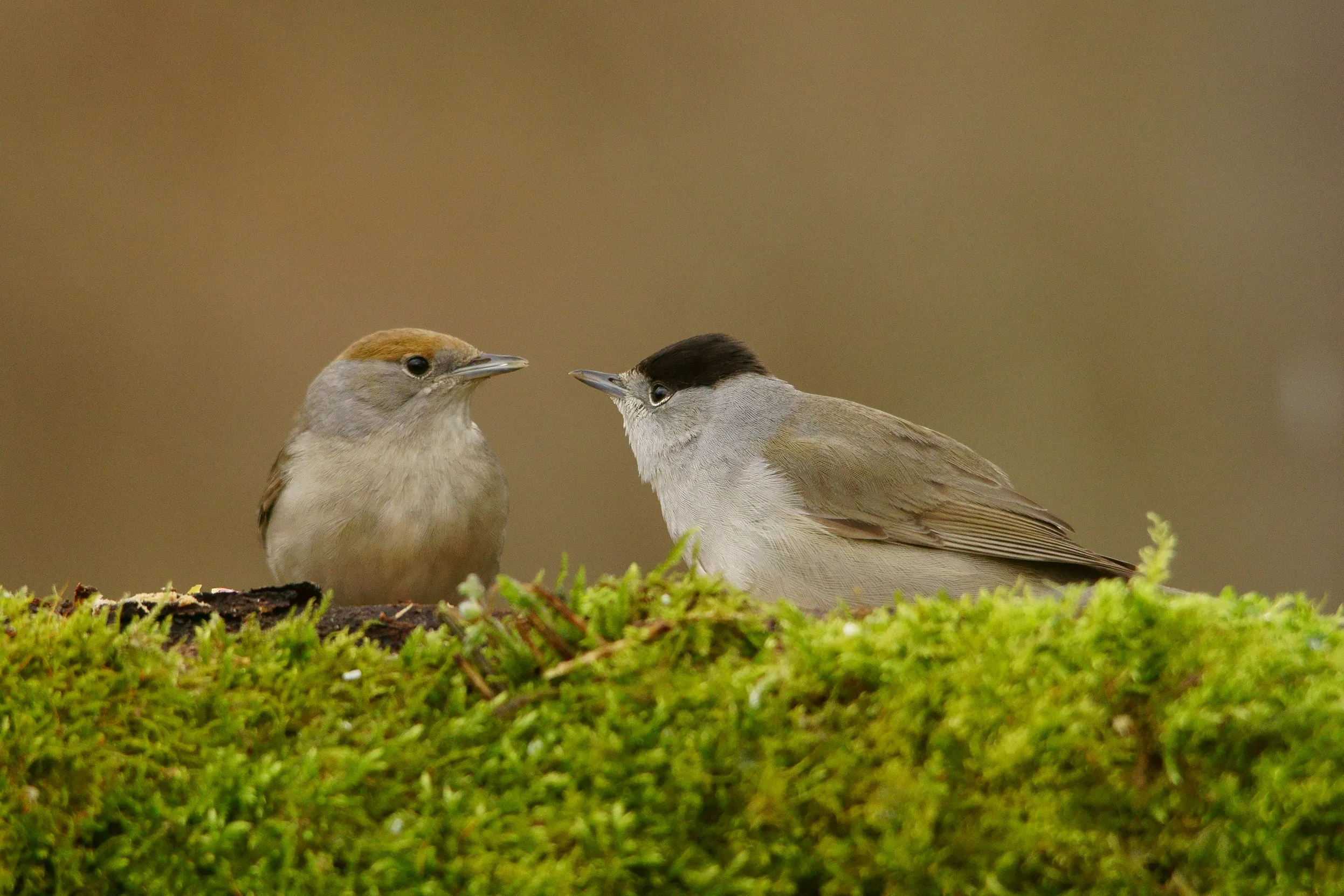
A scratchy song that has earnt this warbler the nickname of the ‘northern nightingale’. It’s a fluty tune, almost like a Blackbird – but the Blackcap races its way through to the end as opposed to the Blackbird’s ambling approach. Starting off quite quiet, the Blackcap begins to belt out as the tune reaches its crescendo.
Blackcaps were typically only seen in the UK throughout spring and summer, when breeding birds arrived on masse from Europe. However, thanks to milder winters, we’re now seeing Blackcaps in our gardens all year round – this change in behaviour has also been attributed to an increase in garden bird feeding.
Like with the Wren, you’ll often hear Blackcap’s song exploding from dense undergrowth long before you catch sight of the perpetrator. Keep an ear out as your approach areas of brambles and nettles.

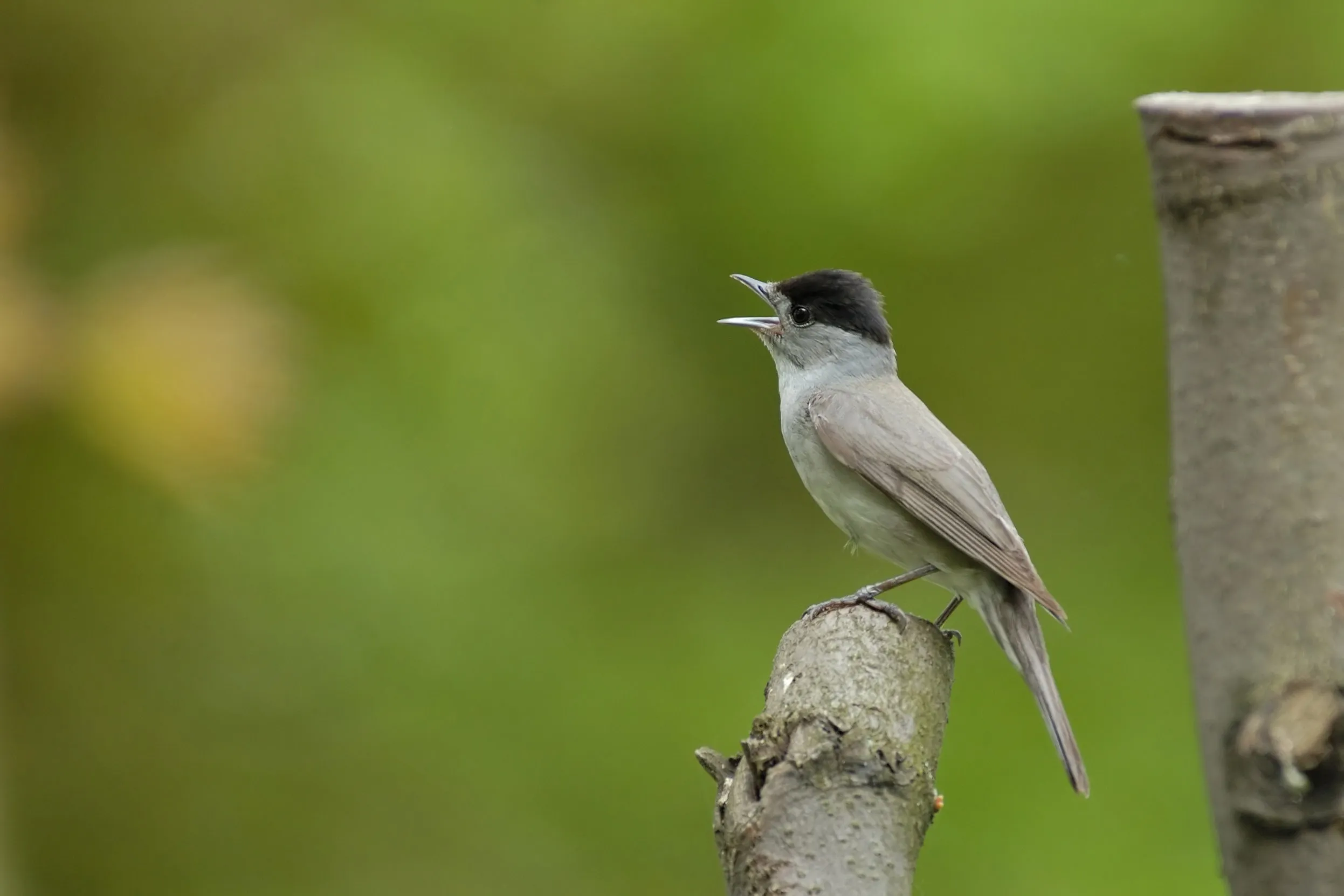
The Blackcap is a distinctive greyish warbler. The top of the male's head is black (its black cap) while the female's is chestnut brown.
A fast paced, squeaky little number without much room for a pause.
Reflective of their shy, retiring nature, you’re won’t often hear a Dunnock sing – unless they’re in the throes of breeding season, when these little brown birds are committed to attracting multiple mates. Listen out from March to May, where their songs will play an instrumental part in the Dawn Chorus.
Despite being one of our more common birds, Dunnocks are secretive and skulking. They’re nicknamed the Hedge Sparrow (although they aren’t sparrows at all), as they’re often heard singing from shrubs.

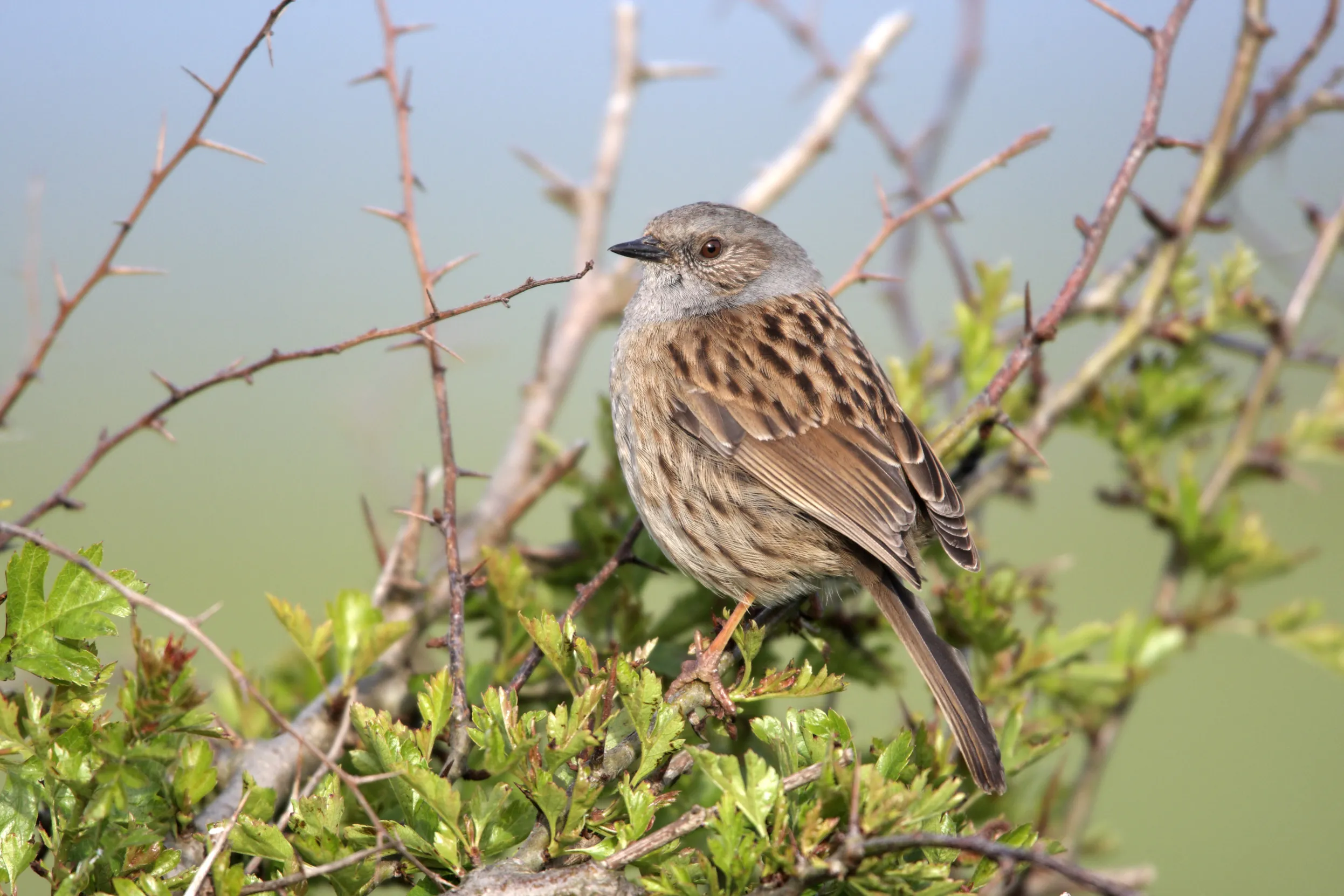
The Dunnock is a small brown and grey bird.
A wheezy sequence of trills at different speeds. Greefinches often sound like they’re shouting out ‘cheese’, but this is interspersed with ‘dibbi-dibbi-dib’ and ‘ju-ju-ju-ju-ju’ noises.
Greenfinches will begin to sing as early as January, getting ready for the breeding season which starts in March.
Everywhere.

They’re a frequent visitor to bird feeders, but in some instances, this is leading to declines. Greenfinches populations plummeted after the spread of trichomoniasis, a disease which has been inflated by poor bird feeding hygiene. Want to know how you can help?


Its twittering, wheezing song and flash of yellow and green as it flies make this finch a truly colourful character.